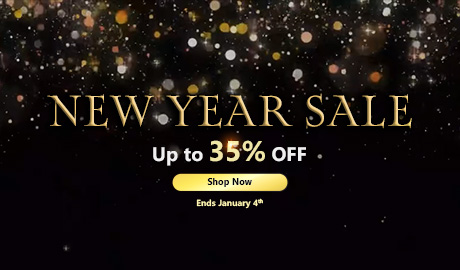How to Start a YouTube Channel for Beginners in 2024

Starting a YouTube channel can be an exciting and rewarding experience. With over 2 billion monthly active users, YouTube is the second most visited website in the world and provides a platform for individuals and businesses to share their content with a massive audience.
However, starting a YouTube channel can be overwhelming, especially for beginners without prior experience. In this article, we will guide you through the process of starting a successful YouTube channel from scratch. We will cover everything from setting up your account to creating and uploading your first video and provide tips and best practices to help you grow your channel and reach a wider audience.
Whether you're a beginner or an experienced content creator, this comprehensive guide will help you take your YouTube journey to the next level.
- Free Download of the Best Video Editing Software for YouTube
- Key Steps to Achieving Success as a Content Creator
- Define Your Niche
- Choose a Name
- Set Up Your Account
- Customize Your Channel
- Plan Your Content
- Create and Upload Videos
- Optimize Your Videos for SEO
- Promote Your Channel
- Final Thoughts on Starting a YouTube Channel
- How to Start a YouTube Channel FAQ
Free Download of the Best Video Editing Software for YouTube

As a content creator, having the right video editing software is essential to elevating your content and standing out on platforms like YouTube. PowerDirector is a leading video editor, designed specifically for content creators looking to take their video production to the next level.
With its advanced features and intuitive interface, PowerDirector offers a comprehensive solution for all your video editing needs. From basic trimming and splitting to adding music, text, and transitions, PowerDirector provides a wide range of tools and effects to help you create high-quality, professional-looking videos.
Whether you're starting a YouTube channel, creating content for social media, or producing your own blog, PowerDirector is the perfect tool for content creators looking to achieve a polished and engaging final product.
Download PowerDirector today and start creating stunning videos that will help you stand out from the crowd.

Key Steps to Achieving Success as a Content Creator

Starting a YouTube channel is easier than ever before. With a few simple steps and some planning, you can launch your own channel and start sharing your content with the world. Here's a step-by-step guide on how to start a YouTube channel:
- Define your niche: Figure out what kind of content you want to create and who your target audience is. This will help you create content that is relevant and engaging to your viewers.
- Choose a name: Pick a name that is memorable and easy to spell, and make sure it reflects the type of content you will be creating.
- Set up your account: You'll need a Google account to start a YouTube channel, so sign up or log in if you already have an account.
- Customize your channel: Add a profile picture and cover photo representing your brand, and make sure to fill out the About section with information about yourself and your channel.
- Plan your content: Decide on a content calendar and schedule for your channel. Consistency is key, so make sure to upload videos regularly.
- Create and upload videos: Use high-quality equipment and editing software to create videos that are visually appealing and engaging to your audience.
- Optimize your videos for SEO: Use keywords in your video title, description, and tags to help your videos rank higher in search results.
- Promote your channel: Share your videos on social media, collaborate with other YouTubers, and engage with your audience to build your following.
With these steps in mind, you're well on your way to starting a successful YouTube channel!
1. Define Your Niche

Defining your niche is a crucial step in starting a successful YouTube channel. By understanding what type of content you want to create and who your target audience is, you can tailor your content to their interests and needs. This will help you attract and retain viewers and ultimately grow your channel.
When defining your niche, it's essential to consider your unique skills, passions, and experiences. This will help you create content that is authentic and meaningful to you and that you enjoy creating. For example, if you have a passion for cooking, you could create a cooking channel that showcases your favorite recipes and cooking techniques.
In addition to considering your own interests and skills, it's also important to consider your target audience. Who are they? What are their interests and needs? What type of content are they looking for on YouTube? By understanding your target audience, you can create content that is relevant and engaging to them, and that will keep them coming back for more.
In conclusion, defining your niche is an essential step in starting a successful YouTube channel. By understanding what type of content you want to create and who your target audience is, you can create content that is authentic, relevant, and engaging to your viewers and help grow your channel over time.
2. Choose a Name

Choosing a name for your YouTube channel is a critical step in establishing your brand and building a loyal audience. A good channel name should be memorable, easy to spell, and accurately reflect the type of content you will be producing. This way, when someone hears your channel name, they will have a clear understanding of what they can expect to see when they visit your channel.
Your channel name should also be unique and not too similar to other popular channels in your niche. This helps you stand out and avoid confusion with other channels. Additionally, it's essential to consider the future growth of your channel and ensure that the name you choose is versatile enough to cover any changes you may make to your content in the future.
Taking the time to choose a name that accurately represents your channel and its content will go a long way in helping you establish a strong brand and attract a loyal audience.
3. Set Up Your Account

When starting a YouTube channel, having a Google account is a necessary step. The reason for this is YouTube is a subsidiary of Google, and therefore, all YouTube accounts are managed through Google accounts. This integration makes it easy to manage your YouTube channel and other Google services, such as Gmail and Google Drive.
To set up your account, simply go to the Google Sign Up page and fill out the required information. If you already have a Google account, simply log in using your existing credentials. Once you have successfully logged in or created a new account, you will be ready to start your YouTube channel.
Having a Google account also gives you access to a range of tools and features that can help you to grow your channel and build your audience. From tracking your performance with YouTube Analytics to managing your subscribers and comments with YouTube Studio, having a Google account is an important step in creating a successful YouTube channel.
4. Customize Your Channel

Customizing your YouTube channel is an essential step in establishing your brand and creating a professional online presence. Your profile picture and cover photo are the first things that viewers will see when they visit your channel, so it's important to choose images that accurately represent your brand.
Your profile picture should be a clear, high-resolution image of your face or your brand logo and should be easily recognizable. Your cover photo should be a visually appealing image that reflects the type of content you will be creating and should be sized correctly to fit the YouTube display.
Filling out the About section is also crucial for building your brand and establishing credibility with your audience. This section is your opportunity to introduce yourself, share your story, and provide information about your channel. Be sure to include details about your niche, target audience, and what viewers can expect from your content. This section should be well-written and engaging, and should clearly communicate the purpose and value of your channel.
Customizing your YouTube channel is an essential step in building your brand and creating a professional online presence. By choosing an appropriate profile picture and cover photo and filling out the About section with clear and engaging information, you can effectively communicate the purpose and value of your channel to your viewers.
5. Plan Your Content

Planning your content is a crucial step in establishing and maintaining a successful YouTube channel. A content calendar helps you stay organized and focused, ensuring that you are consistently creating and uploading content that aligns with your brand and appeals to your target audience. By having a schedule in place, you can also ensure that your content is being uploaded regularly, which is essential for building an engaged and dedicated audience.
When planning your content, consider the type of videos you want to create, the frequency of your uploads, and the specific days and times that you will publish your content. It's also a good idea to experiment with different types of content, such as tutorials, vlogs, and product reviews, to see what resonates best with your audience. By staying flexible and open to trying new things, you can continue to grow and evolve your channel over time.
Planning your content is an essential step in creating a successful YouTube channel. A well-structured content calendar helps you stay organized and focused and ensures that you are consistently providing your audience with high-quality, engaging content.
6. Create and Upload Videos

Take the time to create high-quality videos that are visually appealing and engaging to your target audience. The quality of your videos will directly impact the success of your channel, as viewers are more likely to watch, like, and subscribe to channels that offer high-quality content.
To achieve this, it's important to invest in high-quality equipment such as a camera, microphone, and lighting and to use video editing software to enhance the look and feel of your videos. The software you choose should offer a range of tools and effects that will allow you to customize your videos to match your unique style and goals.
When creating videos, it's also essential to keep your target audience in mind. Consider the type of content that they are interested in and what will keep them engaged and coming back for more. Make sure to keep your videos concise, visually appealing, and engaging, and add elements such as music, graphics, and text to enhance their impact.
Finally, make sure to upload your videos regularly to maintain consistency and build a following. By putting effort and thought into creating your videos, you can establish a strong and successful YouTube channel that will reach and engage your target audience.
7. Optimize Your Videos for SEO

As a YouTube content creator, optimizing your videos for search engines is crucial for increasing visibility and attracting more viewers. SEO, or Search Engine Optimization, is the process of improving the ranking of your videos in search engine results pages (SERPs). When people search for keywords related to your content, the higher your videos rank, the more likely they will be discovered.
To optimize your videos for SEO, you must use relevant keywords in your video title, description, and tags. Your video title should accurately reflect the content of your video and contain relevant keywords that describe what the video is about. The description should provide a brief summary of the video and include relevant keywords to help search engines understand what your video is about.
In addition to the title and description, the tags you use can also impact your video's SEO. You should use relevant keywords in your tags that describe what your video is about and try to use a mix of general and specific keywords.
It's important to note that optimizing your videos for SEO is just one aspect of growing your YouTube channel. You should also focus on creating high-quality, engaging content that provides value to your audience and promoting your channel through social media, collaborations, and audience engagement. By combining these tactics, you can increase the visibility of your videos and attract more viewers to your channel.
8. Promote Your Channel

Promoting your YouTube channel is an essential aspect of building and growing your audience. To maximize the reach of your content and build a strong community of followers, you need to have a strategic approach to promoting your channel. Here are some tips that can help you promote your channel effectively:
- Utilize social media platforms: Share your videos on your personal and business social media accounts, and participate in relevant online communities to reach new audiences.
- Collaborate with other YouTubers: Partnering with other content creators in your niche can help you reach new audiences, grow your following, and expand your network.
- Engage with your audience: Respond to comments and messages, ask for feedback, and participate in discussions to build a strong relationship with your viewers.
- Utilize paid promotion: Consider using paid promotion options such as Google AdWords, social media ads, and influencer marketing to reach new audiences.
- Optimize your videos for search: Make sure your video titles, descriptions, and tags are optimized for search engines to increase visibility and drive traffic to your channel.
By following these tips, you can effectively promote your YouTube channel and build a large and engaged audience over time.
Final Thoughts on Starting a YouTube Channel
Starting a YouTube channel is an exciting opportunity to share your passion and creativity with the world. As a beginner, it is important to take the time to plan and strategize your content and approach. By defining your niche, choosing a memorable name, setting up your account, customizing your channel, planning your content, creating high-quality videos, promoting your channel, and optimizing your videos for SEO, you can set yourself up for success on the platform.
However, it is important to remember that building a successful YouTube channel takes time and effort. Consistency and perseverance are key, as well as a willingness to learn and adapt as you go. With dedication and a commitment to creating engaging and high-quality content, the sky is the limit for your YouTube channel. So go forth and start creating!
How to Start a YouTube Channel FAQ
Starting a YouTube channel and getting paid is a multi-step process. Here are the steps you should follow:
- Define your niche: Figure out what kind of content you want to create and who your target audience is. This will help you create content that is relevant and engaging to your viewers.
- Choose a name: Pick a name that is memorable and easy to spell, and make sure it reflects the type of content you will be creating.
- Set up your account: You'll need a Google account to start a YouTube channel, so sign up or log in if you already have an account.
- Customize your channel: Add a profile picture and cover photo representing your brand, and make sure to fill out the About section with information about yourself and your channel.
- Plan your content: Decide on a content calendar and schedule for your channel. Consistency is key, so make sure to upload videos regularly.
- Create and upload videos: Use high-quality equipment and editing software to create videos that are visually appealing and engaging to your audience.
- Promote your channel: Share your videos on social media, collaborate with other YouTubers, and engage with your audience to build your following.
- Optimize your videos for SEO: Use keywords in your video title, description, and tags to help your videos rank higher in search results.
- Enable monetization: To get paid, you'll need to enable monetization on your YouTube channel. This can be done in the YouTube Studio. Once monetization is enabled, you can earn money from ads, sponsorships, and merchandise sales.
- Meet the requirements: To be eligible for monetization, your channel must meet YouTube's Partner Program requirements, including having at least 1,000 subscribers and 4,000 watch hours in the last 12 months.
Starting a successful YouTube channel that earns money requires hard work and dedication. However, with the right strategy and a commitment to creating high-quality content, you can achieve your goals and turn your passion into a profitable business.
Starting a YouTube channel is free and does not require any initial investment. You can create a YouTube account and start uploading videos without incurring any costs. However, if you want to enhance the quality of your videos, you may want to invest in some equipment, such as a high-quality camera, lighting, and a microphone. The cost of these items can vary widely depending on your budget and the level of quality you want to achieve. Additionally, if you want to edit your videos, you may want to consider purchasing video editing software, which can range from free options to more expensive, professional-level programs. Ultimately, the cost of starting a YouTube channel will depend on your goals, resources, and the amount of time and effort you are willing to invest in your channel.
To be eligible for monetization on YouTube, you must have at least 1,000 subscribers and 4,000 watch hours over the past 12 months. However, the amount of money you can earn on YouTube depends on various factors, including the number of views and clicks on your ads, the location and demographics of your audience, and the type of content you create. Additionally, YouTube has certain policies and guidelines that you must follow to monetize your videos, such as adhering to community guidelines, avoiding copyright infringement, and creating content that is advertiser-friendly.




